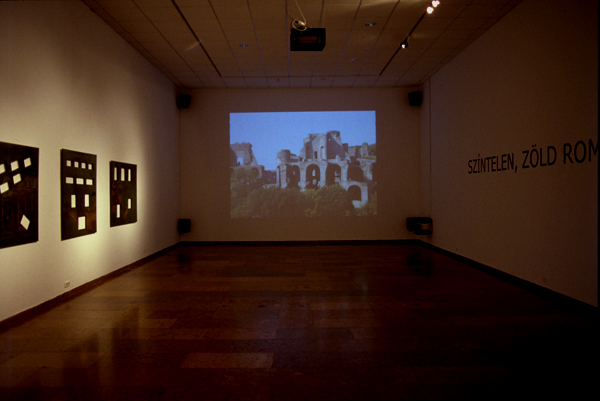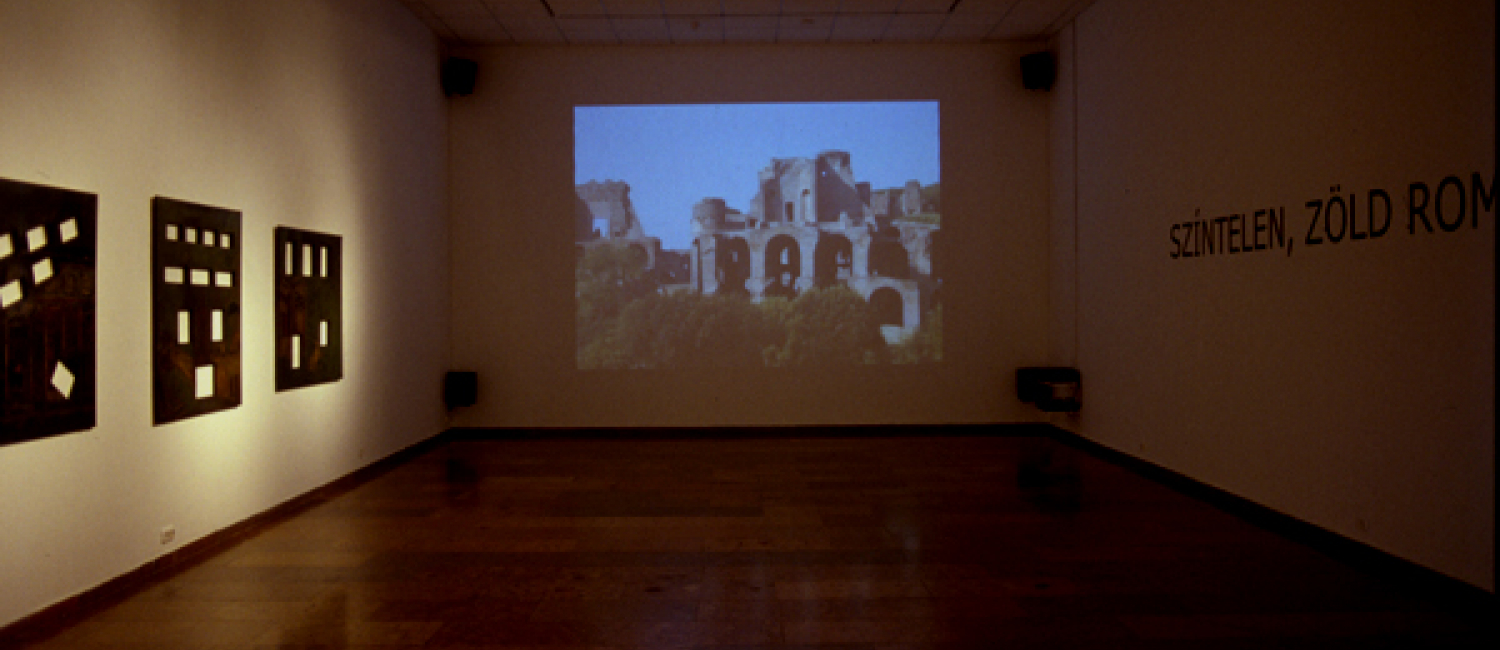László L. Révész is an outstanding representative of the generation of Hungarian artists in their 30s-40s. After graduating from the Painting Department of the Hungarian Academy of Fine Arts in 1982, Révész also took a diploma in animation film making from the College of Applied Arts.
Since the beginning of his career, Révész’s oeuvre has included works in a wide variety of media. Painting par excellence comes just as naturally for him as video, film or other digital technologies. His brushwork and handling of paint are masterful in a similar fashion to his use of state-of-the-art computer software. In some of his works he combines digital technology with manual technique. Most recently, he presented a work consisting of 12 paintings and a computer animation piece at the Trieste Contemporanea Gallery in Trieste. Text was also an important element in this work – with words breaking the surface of the paintings and the digital images.
The installation made specifically for this exhibition is also a combination of painting, digital technology and text. As its title indicates, Révész took inspiration from impressions he received in Rome. The ruins on the Palatine Hill are a most popular tourist attraction in the world. It is common knowledge that ancient Rome was the cradle of European culture. Today only a few barren ruins of this cradle remain. What can a tourist see, what can be gathered from looking at these ruins? To what extent are we aware of the fact that this was the place where the history of Rome began? Does it make any sense to think of the past and the culture or should we be content with what we can see in the present? Are we also like the red poppies growing on the Palatine Hill, for which this soil is just the same as the soil of any other meadow?
Six paintings with broken surfaces, a digital video and a text are displayed in the exhibition space. The paintings make pairs according to the way their surfaces are broken, and so do the compositions. Planes of time and space interpenetrate and mix, they make up a complex structure just like they do in life, and can be viewed from an endless number of angles. The images shot on the Palatine Hill are connected – or broken – by animations. The text is a paraphrase of Noam Chomsky’s famous sentence ”Colourless, green ideas sleep furiously,” by which Chomsky proved that syntactically perfect sentences can be totally senseless.
The work is highly complex. Many little stories, ideas, and thoughts flash through it just like in a Baroque composition. However, while in Baroque art there is always a central organising principle, none can be found here. Révész’s work resembles the narrative style of the Roman chronicler, Marcellinus Ammianus, who not only digresses, but often goes totally and irreversibly off-track in order to call the readers’ attention to general truths.

